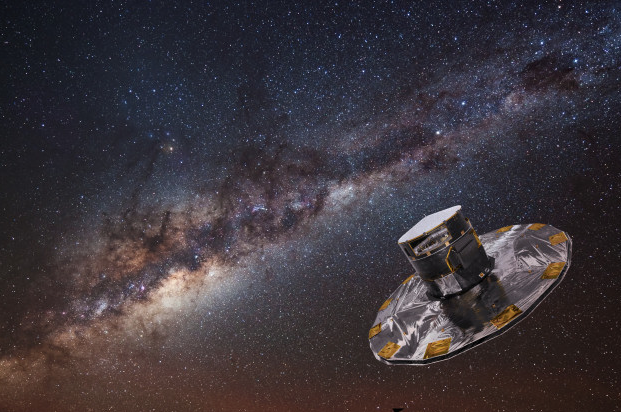[SatNews] ...sweeping its two telescopes across the entire sky and focusing their light simultaneously onto a single digital camera, the largest ever flown in space—it has nearly a billion pixels.
All associated agencies now agree that the ESA's billion-star surveyor Gaia will be launched from Europe's spaceport in Kourou on Thursday, December 19, to begin a five-year mission to map the stars with unprecedented precision.
On October 22 , the decision was taken to postpone the launch of ESA's Gaia mission after a technical issue was identified in another satellite already in orbit. Gaia shares some of the components involved in this technical issue and prompt notification of this problem has allowed engineers working on the final preparations for Gaia's launch to take additional precautionary measures.
The issue concerns components used in two transponders on Gaia that generate 'timing signals' for downlinking the science telemetry. To avoid potential problems, they will be replaced. The transponders will be removed from Gaia at Kourou and returned to Europe, where the potentially faulty components will be replaced and verified. After the replacements have been made, the transponders will be refitted to Gaia and a final verification test made. As a consequence of these precautionary measures, it will not be possible to launch Gaia within the window that includes the previously targeted launch date of 20 November.
Gaia is ESA's billion-star surveyor, designed to provide a precise 3D map of our Milky Way galaxy in order to understand its composition, formation and evolution.
Gaia's main goal is to create a highly accurate 3D map of our Milky Way Galaxy by repeatedly observing a billion stars to determine their positions in space and their movement through it. Other measurements will assess the vital physical properties of each star, including temperature, luminosity and composition.
The resulting census will allow astronomers to determine the origin and the evolution of our Galaxy. Gaia will map the stars from an orbit around the Sun, near a location some 1.5 million km beyond Earth's orbit known as the L2 Lagrangian point. The spacecraft will spin slowly, sweeping its two telescopes across the entire sky and focusing their light simultaneously onto a single digital camera, the largest ever flown in space—it has nearly a billion pixels.
"Our quest to create an enormous stellar census to solve questions on the origin, structure and evolutionary history of our home Galaxy, and to discover tens of thousands of supernovas, previously unseen asteroids and even planets around nearby stars, is finally about to begin."


